
These days cooking in my house often boils down to what's in the cupboard. The new job and the long commute leaves little time for shopping and cooking.
When I see an appealing recipe in a cooking magazine, I often adjust the recipe to match my cupboard inventory.
I purchased the latest issue of
Fine Cooking last week for bus reading material. Two recipes struck my fancy.
The creamy potato soup on the back cover will help expend my overstocked potato bin. That's a recipe for this weekend.
After reading Tony Rosefield's "Pasta from the Pantry" (
Fine Cooking, November 2006, pages 72-75), my first thought was to run to the market to buy the ingredients.
I then remembered that I had a container of Trader Joe's Tomato & Roasted Red Pepper Soup and a box of mostaccioli in the cupboard. I often use the soup to flavor rice pilaf or a substitute for tomato sauce. And I like to stock several varieties of pasta.
In the original recipe, you gently saute fresh minced garlic, then add the contents of a 12-ounce jar of roasted red peppers that have been drained and thinly sliced. From this point on the two recipes flow in an identical manner.
The tomato and red pepper soup saved a difficult step for camp cooks. Most campers don't pack a blender. The soup brings all the robust flavor of the red pepper to the skillet.
PASTA WITH RED PEPPER AND PARMESAN CREAM SAUCEThis recipe has lots of potential. Any hearty flavor will enhance it's delicate creaminess. The author suggested sauteed cauliflower or sliced Italian sausage. Crisp smoked bacon or carmalized onions will work as well.
3/4 pound dried large tube pasta, such as rigatoni, pene rigate or mostaccioli
1 cup tomato and red pepper soup
3/4 cup low-sodium chicken broth
1 teaspoon dried thyme
1/4 teaspoon crushed red pepper flakes
1/2 teaspoon granulated garlic
1 tablespoon sherry vinegar
2 tablespoons cream
1 cup grated Parmesan cheese
Cook the pasta in a large pot of boiling, salted water until tooth tender. Meanwhile, place the soup, broth, thyme, pepper flakes, garlic and vinegar in a large heavy skillet. Bring to a boil. Reduce heat to a gentle simmer and cook until reduced slightly.
Stir in 3/4-cup Parmesan cheese and cream until smooth. Add drained pasta to skillet and cook 1 to 2 minutes over medium heat to blend. Season with kosher salt and freshly ground black pepper to taste. Serve immediately, sprinkled with the remaining cheese.
 One of my favorite Saturday morning breakfasts consists of eggs over easy, cottage onions and fried potatoes, buttered toast and a tall glass of orange juice. Add a steaming cup of camp coffee and grilled sausage patties and you have the best outdoors breakfast.
One of my favorite Saturday morning breakfasts consists of eggs over easy, cottage onions and fried potatoes, buttered toast and a tall glass of orange juice. Add a steaming cup of camp coffee and grilled sausage patties and you have the best outdoors breakfast. I cook my onions over higher heat at first. This gives them a little color before I reduce the heat to low. A dash of kosher salt will encourage moisture in the onion to seep out.
I cook my onions over higher heat at first. This gives them a little color before I reduce the heat to low. A dash of kosher salt will encourage moisture in the onion to seep out. 




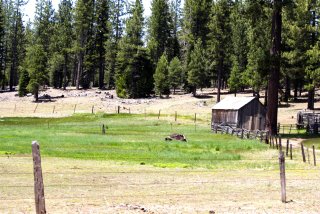 Eldorado National Forest road 11N46 passes between the corral and cabins. The ranch sits on a large track of private property -- almost two square miles -- within the national forest. Please don't disturb the owners.
Eldorado National Forest road 11N46 passes between the corral and cabins. The ranch sits on a large track of private property -- almost two square miles -- within the national forest. Please don't disturb the owners.
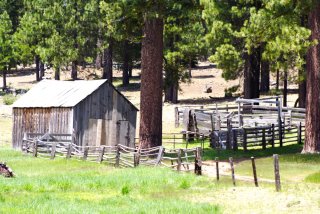




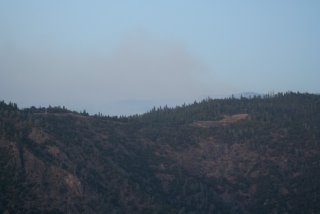

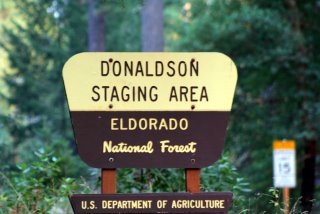



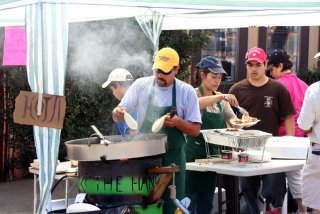
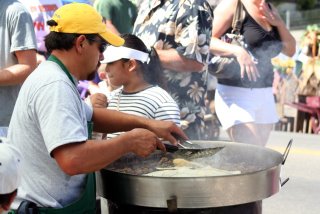

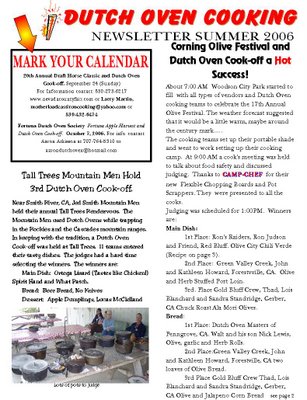


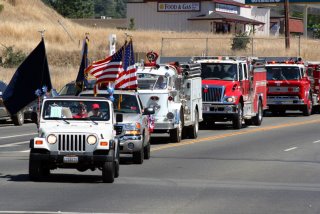
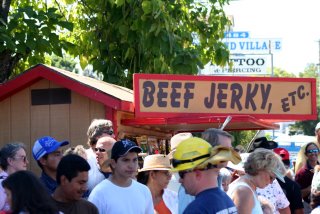
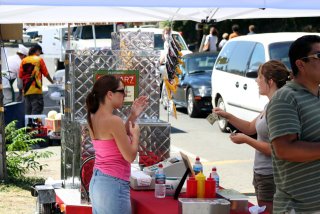

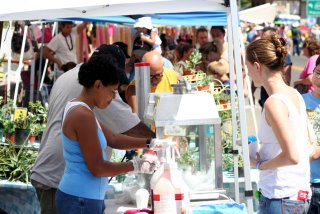 The snow cone vendor was no exception.
The snow cone vendor was no exception.